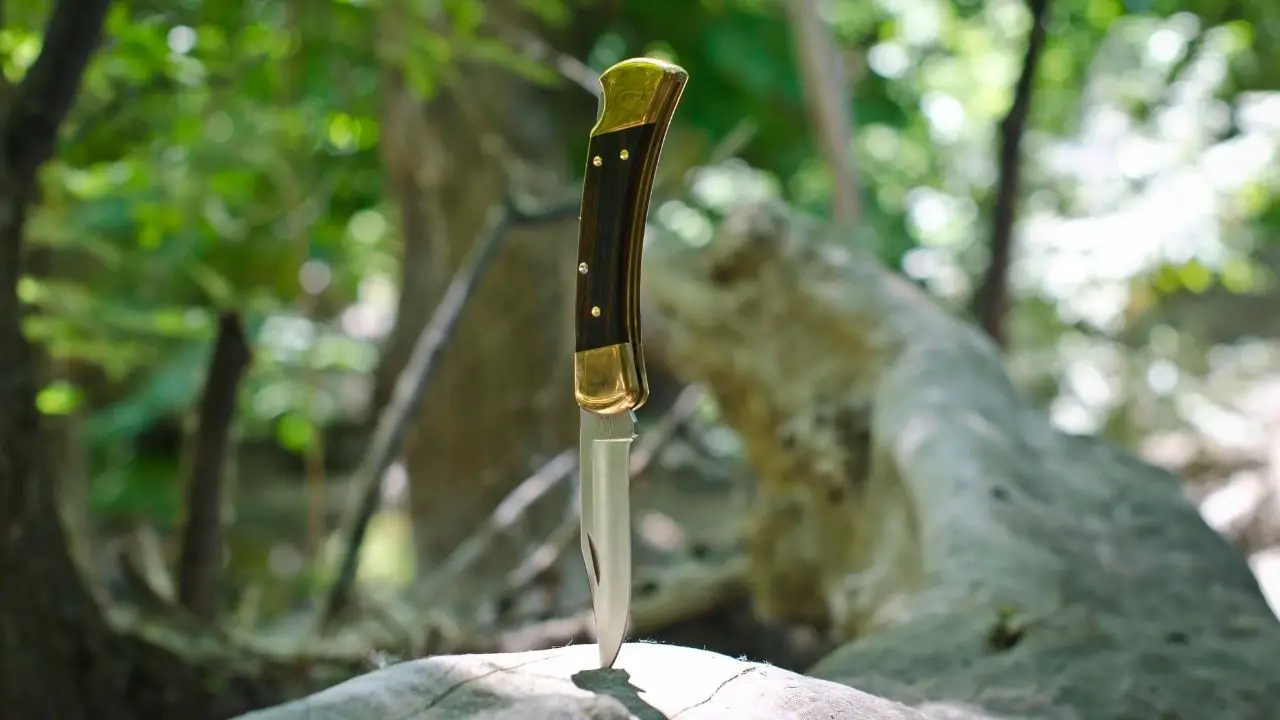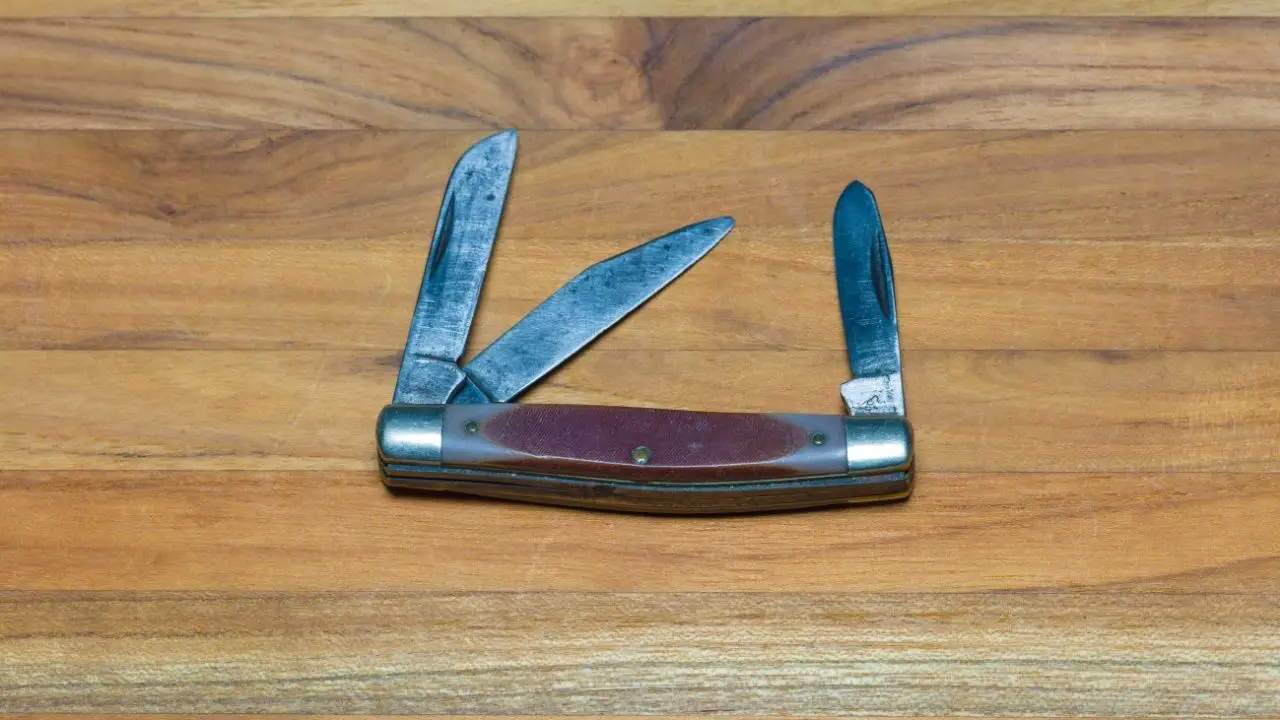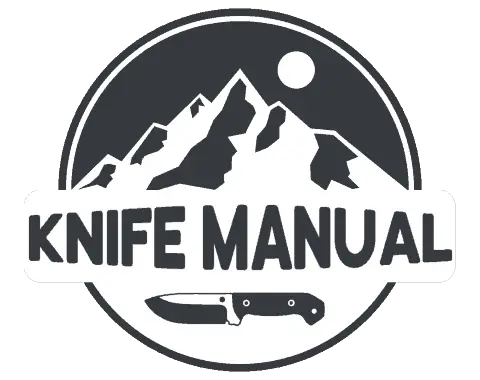Case knives and Buck Knives are well respected and reputable knife companies that both have loyal followings and solid products. But which one is truly better?
Case Knives and Buck Knives are pretty equal and offer well-designed blades at various price points. Case Knives tends to make many of their blades using Chrome Vanadium (CV) or high carbon stainless steel. Buck Knives makes many 420HC steel blades and offers a stellar warranty on their knives.
With roots extending all the way back to 1889, Case Knives has a long and rich history of providing high-quality pocket knives and other blades. Buck Knives has roots going back to 1902, and they’ve been making excellent survival knives, EDC knives, hunting knives, and many other types of blades ever since.
So let’s dive right in and compare two of the most well-known knife brands, Case and Buck, to see which one is truly better.
Table of Contents
Case Knives Vs. Buck Knives

Comparing two seemingly very different knife brands can be difficult because each has its own strength and audience, but I’ll try my best to look at the facts and compare them objectively. So let’s just jump right into the comparison and look at how Case knives and Buck Knives compare to each other in price, materials, craftsmanship, design, and warranty!
Price
Both Case and Buck offer knives at a variety of price points. Below is a quick look at a few price brackets and where each company’s knives fall.
| Estimated Price | Estimated Buck Knives Per Price Bracket | Estimated Percentage of Total Selection |
| $0-$50 | 45 | 31% |
| $51-$100 | 49 | 34% |
| $101-$200 | 34 | 24% |
| $200+ | 16 | 11% |
| Estimated Price | Estimated Case Knives Per Price Bracket | Estimated Percentage of Total Selection |
| $0-$50 | 59 | 9% |
| $51-$100 | 421 | 65% |
| $101-$200 | 123 | 19% |
| $200+ | 42 | 7% |
As you can see from the above tables, 65% of Case knives fall in the $51-$100 price range, while Buck knives have 65% of their knives nearly evenly split between the $0-$50 and $51-$100 price brackets.
It is also essential to note that Case has a much broader selection of knives, with nearly 650 different models at the time of writing. On the other hand, Buck has a selection of around 150 knife models.
Both Case Knives and Buck Knives offer great blades, so which one is better in terms of the price depends largely on your budget and what you’re looking for in a knife.
Materials
Case Knives and Buck Knives pride themselves on using very strong, durable, and good materials to craft their knives. Both knife companies offer a variety of different blade and handle material options on their knives.
Most Case knives have a Chrome Vanadium (CV) blade or a high carbon stainless steel (Tru-Sharp™ Stainless) blade.
Case’s Tru-Sharp™ Stainless steel is similar to 420HC at about 56RC. Case Knives also offers a select few knives with 80CRV2, 154-CM, 1095 Carbon, or S35VN steel blades. Case Knives is known for its excellent bone handles, which come in many variations and colors. However, Case also offers a good selection of fabric weave handles, synthetic plastic handles, and many others.
Buck Knives makes most of their knives using 420HC or 420J2 steel at about 58RC.
Buck also has a few other blade materials only available on specific knife models, such as 5160 Carbon, S30V, or S35VN steel. Some of the most prominent materials Buck uses for its knife’s handles are Micarta, nylon, phenolic, stainless steel, and wood.
Overall, both Case and Buck use decent materials to make their knives. Neither company uses top-of-the-line blade steels or handle materials, but the materials they do use are adequate and appropriate for the price.
Craftsmanship
The craftsmanship on both Case and Buck knives is known to be excellent and consistent. Both companies pride themselves on quality knives, and they’ve generally done an excellent job of delivering quality knives to their customers. Both companies have intense and thorough manufacturing and quality control processes to ensure the final product is as high quality as possible.
Case Knives uses a combination of automated machines and human artisans to shape and create their knives.
Buck Knives, much like Case, prides themselves on the quality of their knives and uses a balance of automated machinery and human craftsmen to create each knife.
Overall, both companies make high-quality knives that are sure to stand up through a lot of use, wear, and tear. Regarding the craftsmanship of their knives, both Case and Buck are essentially equal. One thing that sets Buck apart from Case is Buck’s excellent heat treatment process that results in 58RC hardness and fantastic edge retention.
Design
If you take one look at a Buck knife next to a Case knife, the design differences between the two blades will be glaringly obvious. In terms of knife design, the two companies have very different styles and intentions.
Case Knives is focused primarily on traditional pocket knives, with either a single blade or multiple blades. Their approach to knife design is very traditional, and they don’t stray too far from the famous Case knife base deisgn.
Much like Case, Buck Knives has a significant design element that stays true to what we think of as a traditional knife design, but Buck knives also come in other forms as well. Buck’s famous Buck 110 is a top-rated knife with a very classic design, while their PakLite line of knives is much more modern.
In the end, Case and Buck seem to have different objectives for the designs of their knives, so it is nearly impossible to conclude which one is better. Case Knives makes very traditional knife designs, while Buck takes a more modern spin on traditional knife designs.
Warranty

Like any knife company worth its salt, both Case and Buck have good warranties on their knives. A good knife warranty is important to ensure you get a quality knife, but it also shows that the knife company providing the warranty stands behind its products.
Put simply, Case Knives has a warranty against any manufacturing defects. If your Case knife has anything wrong with it due to a manufacturing defect, then you can have it repaired or replaced. While this ensures you don’t get a broken knife from Case, it is the bare minimum when it comes to knife warranties.
against any manufacturing defects. If your Case knife has anything wrong with it due to a manufacturing defect, then you can have it repaired or replaced. While this ensures you don’t get a broken knife from Case, it is the bare minimum when it comes to knife warranties.
In a similar vein, Buck offers nearly the same warranty , but there are some extra perks for a small fee. Buck will repair or replace any of their knives that have a manufacturing or material defect. For an additional charge, you can also send in your Buck knife for a S.P.A. treatment, where it will get sharpened, polished, and adjusted.
, but there are some extra perks for a small fee. Buck will repair or replace any of their knives that have a manufacturing or material defect. For an additional charge, you can also send in your Buck knife for a S.P.A. treatment, where it will get sharpened, polished, and adjusted.
Both Case and Buck have reasonable warranties on their knives, but the S.P.A. option for a small fee that Buck offers puts it above Case in my opinion.
For more information on the best knife warranties, make sure to check out my article on the topic, where I cover 11 of the best knife warranties on the planet !
!
Key Takeaways
- Price: Case has a wide section of knives, and 65% of them fall in the $51-$100 price range. Buck has a less extensive selection, and 65% of their knives are nearly evenly split between the $0-$50 and $51-$100 price brackets.
- Materials: Case primarily uses Chrome Vanadium (CV) or a high carbon stainless steel (Tru-Sharp™ Stainless) for their knife blades. Most Buck knives have a 420HC or 420J2 steel blade.
- Craftsmanship: Both companies have excellent workmanship, but Buck’s heat treatment process is some of the best you’ll find anywhere.
- Design: Case knives have a more traditional design, while Buck offers a more modern take on knife design.
- Warranty: Both companies have warranties against material or manufacturing defects, but Buck offers a S.P.A. treatment (sharpening, polishing, adjusting) for an extra fee.
Below are a few of my all-time favorite and most popular Buck and Case knives that I’m sure you’ll enjoy:

